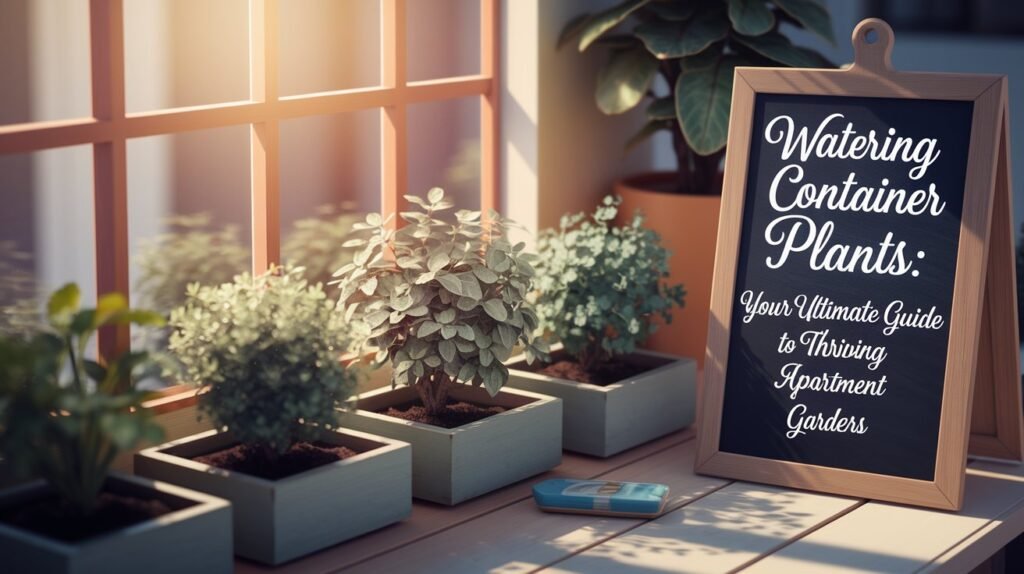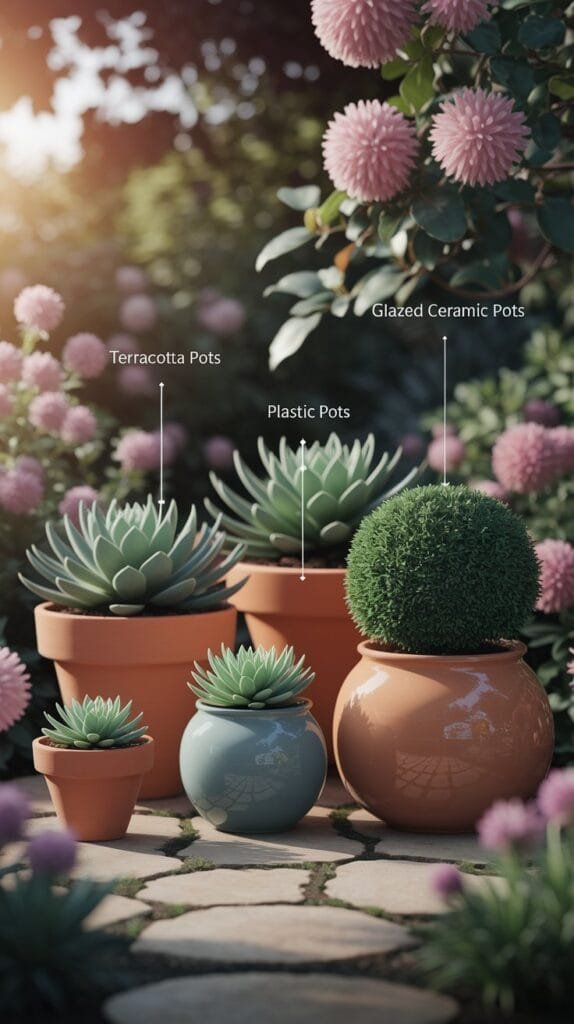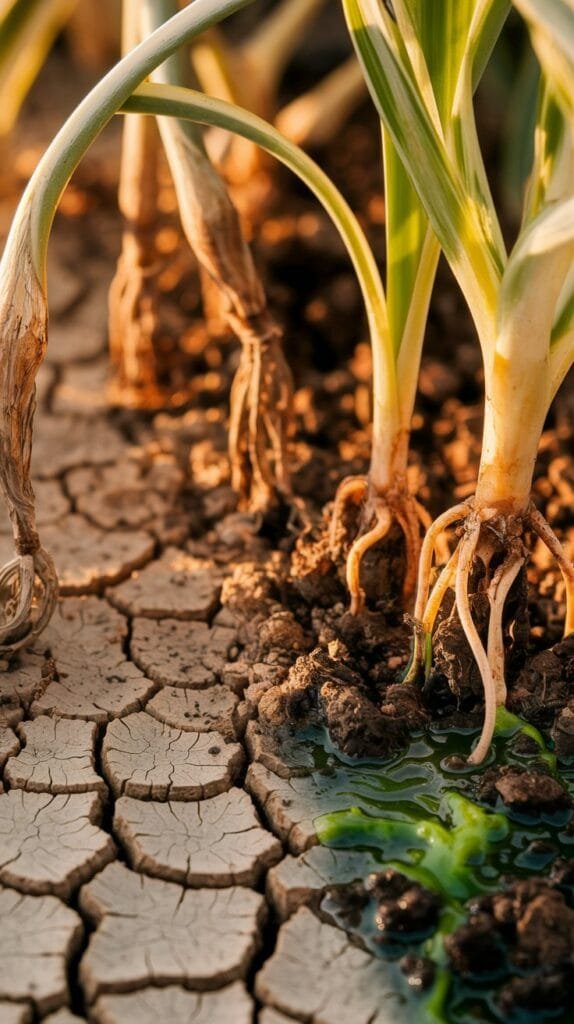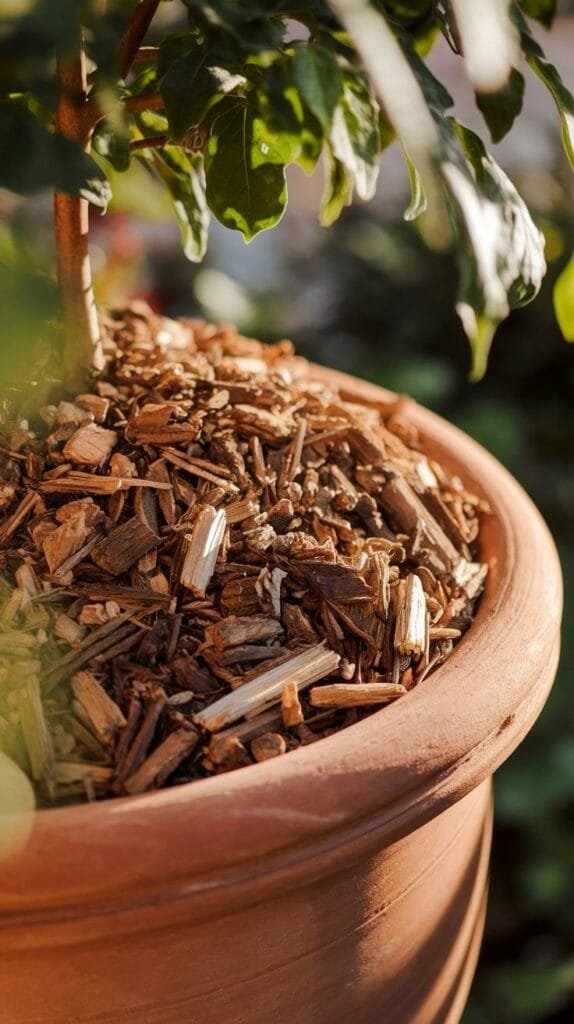
Ever walked past a balcony bursting with vibrant flowers and lush greenery and wondered how they do it? The secret, more often than not, lies in mastering the art of watering container plants. As someone who started my own gardening journey in a small apartment, I know firsthand the challenges and rewards of growing plants in containers. This guide is designed to equip you, especially if you’re new to apartment living, with everything you need to know about keeping your container plants happy and hydrated.
Why Watering Container Plants is Different
Unlike plants in the ground, container plants are entirely reliant on you for their water supply. They don’t have access to the vast network of groundwater that in-ground plants can tap into. This means that understanding their specific watering needs is absolutely crucial for their survival and flourishing.
Think of your containers as little ecosystems. The soil volume is limited, so it dries out much faster, especially during hot weather. Plus, the type of container you use, the potting mix, and the specific plant species all play a role in how frequently you need to water. Ignoring these factors can quickly lead to underwatering or overwatering, both of which can be detrimental to your plant’s health.
Understanding the Factors Affecting Watering Needs
Before we dive into the nitty-gritty of watering techniques, let’s explore the key factors that influence how often your container plants need a drink.
Container Type and Size
- Terracotta Pots: These are porous and allow for better airflow, which means they dry out faster than other materials. They’re great for plants that don’t like to stay consistently moist, but you’ll need to water them more frequently.
- Plastic Pots: Plastic retains moisture much better than terracotta. This is beneficial in hot climates or for plants that prefer consistently moist soil, but it also increases the risk of overwatering if you’re not careful.
- Glazed Ceramic Pots: These offer a balance between terracotta and plastic. They retain moisture better than terracotta but still allow for some breathability.
- Size Matters: Larger containers hold more soil and therefore retain moisture longer than smaller containers. Keep this in mind when deciding how often to water. A tiny succulent in a 4-inch pot will need water far more often than a small shrub in a 12-inch pot.

Potting Mix
- Well-Draining Mix is Key: Avoid using garden soil in containers. It’s too dense and doesn’t drain well, leading to waterlogged roots and root rot. Always use a high-quality potting mix specifically formulated for containers. These mixes typically contain ingredients like peat moss, perlite, and vermiculite, which provide good drainage and aeration.
- Consider Moisture-Retaining Additives: Some potting mixes contain moisture-retaining polymers that help to reduce watering frequency. These can be helpful, especially in hot climates, but be careful not to overwater.
- Organic Matter: Adding compost to your potting mix can improve its water-holding capacity and provide essential nutrients to your plants.
Plant Type
Different plants have different watering needs. Succulents and cacti, like the Zebra Cactus (check out this complete guide: https://verticallivegarden.com/zebra-cactus-the-complete-guide-to/), are drought-tolerant and prefer to dry out between waterings. Herbs like basil and mint prefer consistently moist soil. Flowering plants generally need more water than foliage plants, especially when they’re actively blooming.
Understanding the specific needs of each plant is crucial. Research your plants! A quick online search will tell you whether your plant prefers dry, moist, or consistently wet soil.
Climate and Weather
- Temperature: Hot weather increases evaporation, so you’ll need to water more frequently during the summer months.
- Humidity: High humidity reduces evaporation, so you can water less frequently.
- Wind: Windy conditions can dry out soil quickly, especially in exposed locations like balconies.
- Rainfall: Obviously, rainfall can reduce the need for watering. However, don’t rely solely on rain, especially if your plants are sheltered under an overhang.
Sunlight Exposure
Plants in full sun will generally need more water than plants in shade. This is because they’re actively photosynthesizing and losing water through transpiration.
Identifying the Signs of Underwatering and Overwatering
Learning to recognize the signs of underwatering and overwatering is essential for maintaining healthy container plants.
Signs of Underwatering
- Wilting Leaves: This is the most obvious sign. The leaves will droop and look limp.
- Dry Soil: The soil will feel dry to the touch, even an inch or two below the surface.
- Leaf Drop: In severe cases, the leaves may turn brown and fall off.
- Stunted Growth: Underwatered plants may grow slowly or not at all.
- Crispy Leaf Edges: The edges of the leaves may turn brown and crispy.

Signs of Overwatering
- Yellowing Leaves: This is a common sign of overwatering, especially in the lower leaves.
- Soft, Mushy Stems: The stems may feel soft and mushy to the touch.
- Root Rot: This is a serious condition where the roots begin to rot due to lack of oxygen. You may notice a foul odor coming from the soil.
- Edema: Small, blister-like bumps may appear on the leaves.
- Mold or Algae Growth: Green algae or white mold may grow on the surface of the soil.
The Best Watering Techniques for Container Plants
Now that you understand the factors that affect watering needs and how to identify the signs of underwatering and overwatering, let’s discuss the best watering techniques.
Water Deeply and Infrequently
Instead of giving your plants a little bit of water every day, water them deeply and less frequently. This encourages the roots to grow deeper into the soil, making them more resilient to drought. When you water, saturate the entire soil mass until water drains out of the drainage holes at the bottom of the container.
Water at the Base of the Plant
Avoid watering the foliage, especially in humid conditions. Wet leaves can create a breeding ground for fungal diseases. Water at the base of the plant, directing the water towards the soil.
Use the Finger Test
The finger test is the most reliable way to determine if your plants need water. Stick your finger into the soil about an inch or two deep. If the soil feels dry, it’s time to water. If it feels moist, wait a day or two and check again.
Water in the Morning
Watering in the morning allows the foliage to dry out during the day, reducing the risk of fungal diseases. It also allows the plants to absorb water before the hottest part of the day.
Adjust Watering Based on the Season
As the seasons change, so will your plants’ watering needs. Reduce watering frequency during the cooler months and increase it during the warmer months.
Consider Self-Watering Containers
Self-watering containers are a great option for busy gardeners or those who tend to overwater or underwater. These containers have a reservoir at the bottom that slowly releases water to the soil as needed.
Mulch Your Containers

Adding a layer of mulch to the surface of the soil can help to retain moisture and reduce evaporation. Use organic mulches like wood chips, shredded bark, or straw.
Tools and Gadgets to Help You Water
While a watering can is often sufficient, there are several tools and gadgets that can make watering container plants easier and more efficient.
- Watering Can with a Long Spout: A watering can with a long, narrow spout allows you to direct water precisely to the base of the plant without wetting the foliage.
- Watering Wand: A watering wand is a long, adjustable nozzle that attaches to your hose. It allows you to water hard-to-reach areas and control the water flow.
- Soil Moisture Meter: A soil moisture meter measures the moisture content of the soil. This can be helpful for determining when to water, especially for plants with specific watering needs.
- Rain Gauge: A rain gauge measures the amount of rainfall. This can help you to adjust your watering schedule accordingly.
- Drip Irrigation System: A drip irrigation system delivers water directly to the roots of the plants, minimizing water waste and reducing the risk of fungal diseases. These can be particularly useful for vertical gardens. Why not go the whole way and set up a vertical garden?
Troubleshooting Common Watering Problems
Even with the best techniques, you may still encounter watering problems. Here are some common issues and how to address them.
- Water Runs Straight Through the Soil: This indicates that the soil is too dry and has become hydrophobic. To fix this, slowly water the soil in small increments, allowing it to absorb the water gradually. You can also try adding a wetting agent to the water.
- Water Pools on the Surface of the Soil: This indicates that the soil is compacted or poorly draining. Gently aerate the soil with a fork or chopstick. You may also need to repot the plant with a fresh, well-draining potting mix.
- Algae Growth on the Soil Surface: This is usually a sign of overwatering or poor drainage. Scrape off the algae and allow the soil to dry out slightly. Improve drainage by adding perlite or vermiculite to the potting mix.
- Salt Buildup on the Pot: This is caused by minerals in the water accumulating on the surface of the pot. Rinse the pot thoroughly with water to remove the salt buildup.
Container Plant Watering Frequency Calculator
To help you estimate how often you should be watering your container plants, use this simple calculator. Keep in mind that this is just an estimate, and you should always use the finger test to confirm whether your plants need water.
Container Plant Watering Calculator
htmlContainer Plant Watering Calculator
Note: This calculator provides a general estimate. Always check the soil moisture before watering!
Conclusion: Mastering the Art of Watering
Watering container plants might seem daunting at first, but with a little knowledge and practice, you can master the art of keeping your plants happy and hydrated. Remember to consider the factors that affect watering needs, learn to recognize the signs of underwatering and overwatering, and use the best watering techniques. With a little attention and care, you can create a thriving apartment garden that brings beauty and joy to your life. Happy gardening!

